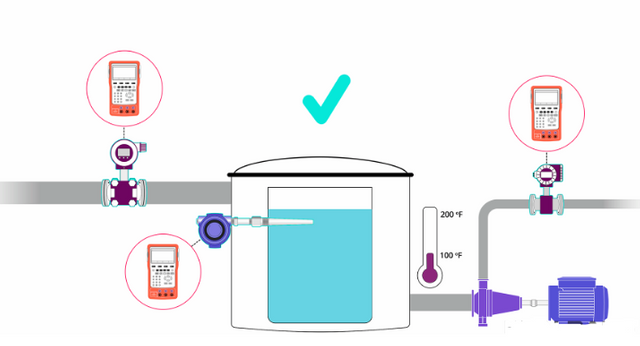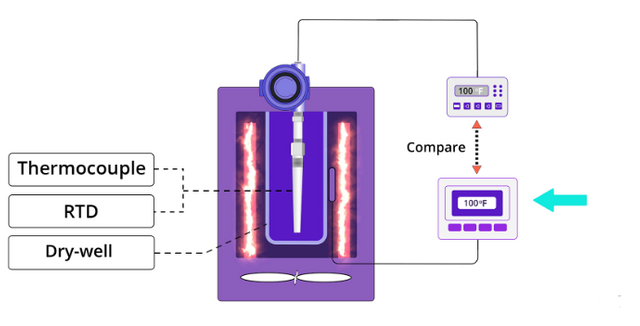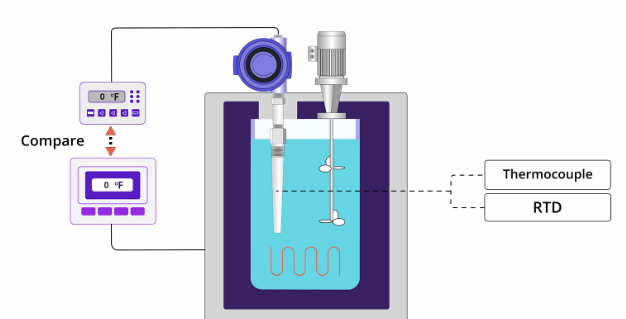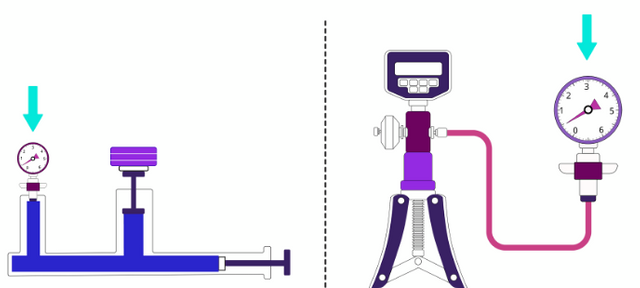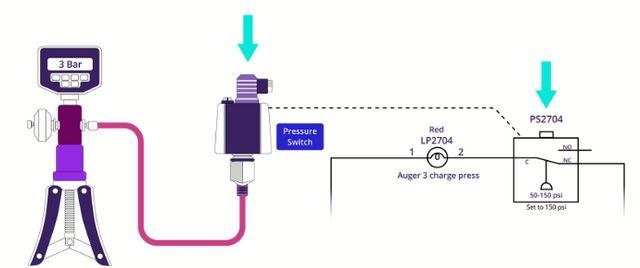What is an Instrument Calibrator?
When calibrate instruments?
If the quantity being measured is not being accurately represented by the measuring instrument, the measuring instrument possibly requires calibration.
We can replace the quantity being measured with an instrument calibrator. Calibration can be carried out by comparing the readings on an instrument with those given by the instrument calibrator.
Instrument calibration is an adjustment or a series of adjustments performed on an instrument to ensure that the instrument readings accurately represent the quantity being measured.
Why calibrate instruments?
Instruments require calibration for many reasons.
– Equipment degrades over time.
– Anytime maintenance is performed on an instrument, it needs to be calibrated.
– Often the range of an instrument is changed thereby requiring calibration.
– If faults are found and repaired as a result of troubleshooting, quite likely any instruments that were included in the troubleshooting process will require calibration.
Instrument calibrator types
There are many different instruments used in process control, so there must be different calibrators as well. Let’s look at a few different types of instrument calibrators.
1/ Block (dry-well)
Block or dry-well calibrators are used to calibrate temperature probes such as RTDs and Thermocouples. The temperature sensor is placed in the dry-well calibrator. A metal block is heated and held at a precise temperature.
2/ Fluid bath
A Fluid Bath Calibrator is similar to a dry-well calibrator as the temperature sensor is placed inside. The big difference is the sensor is immersed in a fluid that is heated and held at a precise temperature.
3/ Pneumatic
Pneumatic Calibrators provide regulated pressure as needed to calibrate, test, or troubleshoot pressure instruments.
3-a/ Deadweight tester (DWT)
One of the oldest and most accurate pneumatic calibrators is the Dead Weight Tester (DWT).
A DWT will likely be found mounted permanently in the instrument shop. The DWT has several Dead Weights that are precisely calibrated in pressure units.
A DWT reaches a float condition when the upward force generated by a manual pump is balanced by an equal and opposite downward pressure from the Dead Weight that sits on top of a piston.
When the piston floats, the instrument under test can be calibrated to indicate the pressure stamped on the Dead Weight.
3-b/ Aspirator
Another type of pneumatic calibrator is the Hand Held Aspirator. A scissor-like grip adjusts the output pressure and a digital gauge indicates the pressure readout.
Hand-held aspirators are particularly useful when field testing and calibrating devices such as pressure switches.
4/ Signal reference calibrators
As the name suggests, Signal Reference Calibrators can output a variety of electrical signals. There are many different types of Signal Reference Calibrators available to produce electrical outputs such as voltage, current, ohms, frequency, etc.
Many signal reference calibrators are capable of simulating thermocouples and RTDs as well. This type of calibrator often referred to as a Simulator, can accurately reproduce a sensor output and display that output in the variable units it represents.
For example, a calibrator can produce the required ohms value of 212 ohms corresponding to a PT100 RTD at 300 °C.
And, just to make them more versatile, many signal reference calibrators also perform measurement functions similar to a Digital Multimeter.
These multifunction calibrators are very useful. For example, a Thermocouple transmitter can be calibrated across its entire temperature range using the Thermocouple Simulation function of the Calibrator.
The user selects the Thermocouple type on a calibrator and enters the required simulation temperature. The resulting transmitter mA current output is displayed by the measurement function of the calibrator.
As a troubleshooting tool, a multifunction calibrator is invaluable. With a few quick measurements, a Field Tech can determine if a fault is caused by the sensor or the transmitter.
Source and simulate modes
Source and Simulate are 2 terms commonly used by calibrator vendors to describe modes of operation. Let’s have a closer look at each function.
1/ Source mode
We’ve already touched on the Source capabilities of a calibrator. Earlier we said that a signal reference calibrator can produce electrical outputs such as voltage and current.
In Source mode, the calibrator generates calibrated signals for testing and calibrating process instruments.
2/ Simulate mode
In Simulate mode, the calibrator replaces or simulates a transmitter in a 2-wire loop configuration. The calibrator can be adjusted to supply known settable test currents.
